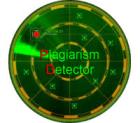Monitoring of Side Effects of Amoxicillin and Cotrimoxazole in Pediatric Patients in Paguyangan Health Center in 2022
Keywords:
Amoxicillin, Cotrimoxazole, Monitoring of drug side effectsAbstract
Antibiotic use often causes side effects (Ratman et al., 2019). Side effects that can be caused by the use of amoxicillin and cotrimoxazole in children are nausea and vomiting, diarrhea, rashes, hypersensitivity reactions (Tambunan et al., 2012). The use of amoxicillin and cotrimoxazole antibiotics in Paguyangan Health Center is the type of antibiotic that is most often given to pediatric patients so it is necessary to monitor the side effects of amoxicillin and cotrimoxazole in Paguyangan Health Center in order to achieve the success of drug therapy and reduce the occurrence of resistance. Knowing the pattern of use of amoxicillin and cotrimoxazole in pediatric patients in Paguyangan Health Center, knowing the side effects that can be caused from the use of amoxicillin in pediatric patients in Paguyangan Health Center, knowing the side effects that can be caused from the use of cotrimoxazole in pediatric patients in Paguyangan Health Center. This study uses descriptive observational methods and with a posspective research design through interviews with parents of pediatric patients who get prescriptions for amoxicillin and cotrimoxazole by mobile phone for 24 hours, 48 hours and 72 hours at Paguyangan. The population in this study was all parents of pediatric patients who received antibiotics at Paguyangan Health Center, and recorded from January to June 2021 as many as 669 patients. Sampling technique is using puposive sampling technique by looking at the subject according to inclusion criteria. Inclusion criteria for the study were parents of pediatric patients aged 0-11 who redeemed the antibiotics amoxicillin and cotrimoxazole, prescription and record data in December 2021, and parents of pediatric patients who were willing to be respondents and had cell phones. The exclusion criteria in this study were pediatric patients aged 0-11 years who did not get antibiotics and parents of patients who were not willing to be respondents and did not have cell phones. The results of monitoring side effects of amoxicillin and cotrimoxazole use in pediatric patients did not cause side effects shown with a percentage of 100%. This study showed the percentage of pediatric patients who received the most antibiotics type amoxicillin tab 500mg by 64.8% and amoxicillin syr 125mg / 5ml as much as 27.8%, the percentage of children who received the most amoxicillin and cotrimoxazole aged 5-11 years as much as 68.5%, the percentage of dosing the most given is amoxicillin tab 500mg 3 x 1 tab by 24.1%, The percentage of diagnosis of the most diseases is ISPA disease by 53.7% and the percentage of treatment for the most is for 3 days by 66.7%, the use of amoxicillin and cotrimoxazole does not cause side effects indicated by a percentage of 100%.
Keywords: Amoxicillin, Cotrimoxazole, Monitoring of drug side effects
References
2. Amaral, E. N. (2020). Evaluasi Penggunaan Antibiotik Pada Pasien Pneumonia Anak Berdasarkan Ketepatan Dosis dan Ketepatan Frekuensi Pemberian di Puskesmas Bergas Pada Tahun 2018. Skripsi. Program Studi S1 Farmasi Fakultas Ilmu Kesehatan Universitas Ngudi Waluyo Ungaran.
3. Amin, M. Al, & Juniati, D. (2017). Klasifikasi Kelompok Umur Manusia Berdasarkan Analisis Dimensi Fraktal Box Counting Dari Citra Wajah Dengan Deteksi Tepi Canny. Jurnal Ilmiah Matematika, 2(6), 34.
4. Benua, G. P., Tiwow, G. A. R., Untu, S. D., & Karauwan, F. A. (2019). Evaluasi Rasionalitas Penggunaan Antibiotik Pada Pasien ISPA Di Puskesmas Tonusu Kecamatan Pamona Puselemba Kabupaten Poso. Jurnal Biofarmasetikal Tropis, 2(2), 136–140.
5. Eveliani, B. V., & Gunawan, S. (2021). Profil Ketepatan Penggunaan Antibiotik Pada Karyawan Universitas Tarumanegara. Jurnal Muara Medika Dan Psikologi Klinis, 1(1), 30–39.
6. Husna, A. S. (2021). Penatalaksanaan Holistik Scabies pada Anak Usia 4 Tahun di Puskesmas Panjang melalui Pendekatan Kedokteran Keluarga (Holistic Management of Scabies in a 4 Year-Old- Child at Puskesmas Panjang with Family Doctor Approach). Jurnal Ilmu Medis Indonesia (JIMI), 1(1), 25–38.
7. Jerry. (2017). 69 Evaluasi Kejadian Efek Samping Obat Antibiotika Pada Pasien Rawat Inap. Social Clinical Pharmacy Indonesia Journal Universitas 17 Agustus 1945 Jakarta, 2(1), 69–74.
8. Kemenkes RI. (2019). e-Book Profil Kesehatan Indonesia Tahun 2019. Jakarta: Pusat Data dan Informasi Kementrian Kesehatan Republik Indonesia
9. Khairunnisa, R., Hajrah, H., & Rusli, R. (2016). Profil Penggunaan Antibiotik Pada Pasien Ispa Di Beberapa Puskesmas Kota Samarinda. Artikel Prosiding Seminar Nasional Kefarmasian Ke-4, 20–21.
10. Komite PPRA. (2016). Panduan Umum Penggunaan Antimikroba. Malang: Komite Pengendalian Resistensi Antimikroba (KPRA) RSUD Dr. Saiful Anwar Malang.
11. Korompis, F., Tjitrosantoso, H., & Goenawi, L. R. (2013). Studi Penggunaan Obat Pada Penderita Diare Akut Di Instalasi Rawat Inap Blu RSUP Prof. Dr. R. D. Kandou Manado Periode Januari – Juni 2012. Jurnal Ilmiah Farmasi, 2(01), 42–51.
12. Mahmudah, F., Sumiwi, S. A., & Hartini, S. (2016). Study of the Use of Antibiotics with ATC/DDD System and DU 90% in Digestive Surgery in Hospital in Bandung. Indonesian Journal of Clinical Pharmacy, 5(4), 293–298. https://doi.org/10.15416/ijcp.2016.5.4.293
13. Mayrona, C. T., Subchan, P., & Widodo, A. (2018). Pengaruh Sanitasi Lingkungan Terhadap Prevalensi Terjadinya Penyakit Scabies Di Pondok Pesantren Matholiul Huda Al Kautsar Kabupaten Pati. Diponegoro Medical Journal (Jurnal Kedokteran Diponegoro), 7(1), 100–112.
14. Nur’aini, Miladi, A., & Lestari, A. D. (2014). Evaluasi Penggunaan Antibiotik Pada Pasien Faringitis Anak di Instalasi Rawat Jalan RSU Kabupaten Tangerang Tahun 2014. Farmagazine, I(1), 10–17.
15. Ratman, S. H., Untari, E. K., & Robiyanto. (2019). Pemantauan Efek Samping Antibiotik yang Merugikan Pasien Anak yang Berobat di Puskesmas Kecamatan Pontianak Timur. Jurnal Farmasi Kalbar, 4(1), 1–14.http://jurnal.untan.ac.id/index.php/jmfarmasi/article/download/35319/75676582757
16. Rezki, K. (2017). Monitoring Efek Samping Obat Anti-Tuberkulosis (OAT) Pada Pengobatan Tahap Intensif Penderita TB Paru Di Kota Makassar. Journal of Agromedicine and Medical Sciences, 3(1), 19–24.
17. Riskesdas. (2013). Laporan Nasional 2013. Badan Penelitian dan Pengembangan Kesehatan Kementrian Kesehatan RI.
18. Ristanto, R. (2019). Pengaruh Pendidikan Kesehatan Dengan Metode Simulasi Terhadap Pengetahuan Dan Ketrampilan Dokter Kecil Pada Penanganan Luka Terbuka. Jurnal Kesehatan Mesencephalon, 5(2).
19. Ruminsir, Q. A., Bambungan, Y. M., & Lerebulan, E. F. (2020). Gambaran Pola Penggunaan Antibiotik Pada Pasien Pediatri Infeksi Saluran Penapasan Akut di Puskesmas Tanjung Kasuari Kota Sorong. Jurnal Inovasi Kesehatan, 2(1), 6–12.
20. Samgryce Siagian, H., & Harahap, C. (2021). Evaluasi Penggunaan Antibiotik Pada Pasien Penyakit Diabetes Melitus Tipe II Di Instalasi Rawat Inap Rsu Karya Bakti Ujung Bandar Rantauprapat. JIFI (Jurnal Ilmiah Farmasi Imelda), 4(2), 64–69. https://doi.org/10.52943/jifarmasi.v4i2.532
21. Sukawaty, Y., Helmidanora, R., & Handayani, F. (2018). Profil Peresepan Obat Peyakit Diare pada Pasien Rawat Inap Anak di RSU Dr. Kanujoso Djatiwibowo Balikpapan. Jurnal Ilmu Kesehatan, 5(2), 130–136. https://doi.org/10.30650/jik.v5i2.63
22. Tambunan, T., Rundjan, L., Satari, H. I., Windiastuti, E., Somasetia, D. H., & Kadim, M. (2012). Formularium Spesialistik Ilmu Kesehatan Anak. Ikatan Dokter Anak Indonesia.
23. Tusino, A., & Widyaningsih, N. (2018). Karakteristik Infeksi Saluran Kemih Pada Anak Usia 0- 12 Tahun Di Rs X Kebumen Jawa Tengah. Biomedika, 9(2), 39–46. https://doi.org/10.23917/biomedika.v9i2.5842
24. Utami, R. E. M., Untari, E. K., & Robiyanto. (2018). Monitoring Efek Samping Antibiotika yang Merugikan pada Pasien Anak di Puskesmas Kecamatan Pontianak Utara Periode November-Desember 2018. Jurnal Farmasi, Fakultas Kedokteran, Universitas Tanjungpura, Pontianak.
25. Utomo, B. S. ., & Siregar, F. F. . (2018). Profil Klinis Otitis Media Akut di Rumah Sakit Umum Universitas Kristen Indonesia. Majalah Kedokteran UKI 2018 Vol XXXIV No.1, XXXIV(1), 1–6.
26. World Health Organization. (2018). WHO Report on Surveillance of Antibiotic.Consumption.http://apps.who.int/iris%0Ahttps://apps.who.int/iris/bitstream/handle/10665/277359/9789241514880-eng.pdf
27. Wulandari, A. (2013). Penanganan Diare Di Rumah Tangga Merupakan Upaya Menekan Angka Kesakitan Diare Pada Anak Balita. Journal of Chemical Information and Modeling, 53(9), 1689–1699.
28. Zaini, M., Muliyani, Soediono, J. B., & Destiana, E. (2019). Pola Persepan Antibiotik Pada Pasien Pneumonia Di Poli Anak Rsud Dr. H. M. Ansari Saleh Banjarmasin Tahun 2017. Jurnal Insan Farmasi Indonesia, 2(1), 138–148. https://doi.org/10.36387/jifi.v2i1.306
















